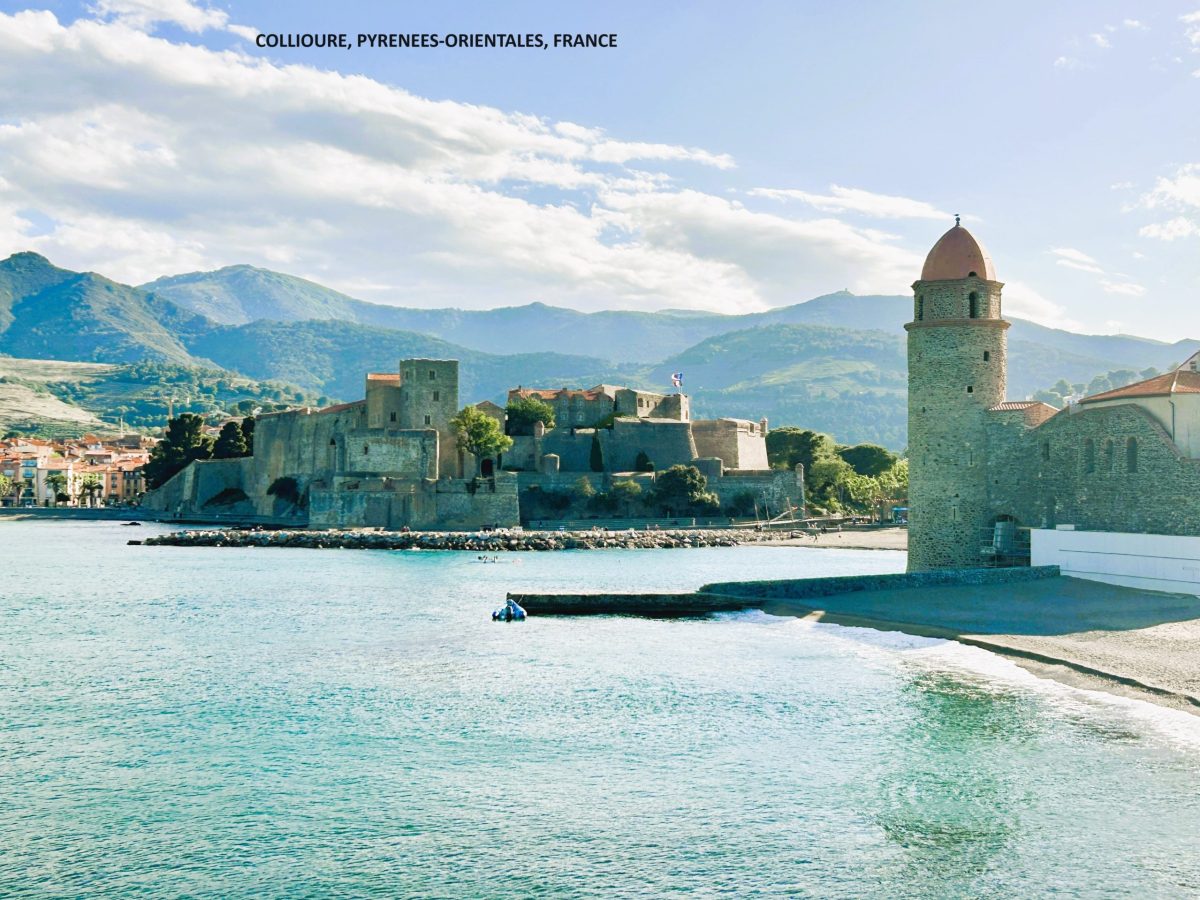We very much enjoyed Marburg and were reluctant to leave but, the weather forecast across Germany (and almost all of northern Europe) was so bad that we thought it best to make our way south west into France or even Spain. We chose to go by way of another scenic university city, Tubingen in Swabia. This city is purportedly one of Germany’s sunniest spots although you wouldn’t believe it while we were there. In fact, I’m thinking we should have driven even further west because I was absolutely drenched whilst wandering the city centre.
Tubingen straddles the River Neckar and a part of my walk into the city from the campsite took me on to the Neckarinsel. This artificial island is about three quarters of a mile long and a path lined with 200 year old Plane trees (the Platanenallee) runs it’s length to the Eberhardsbrucke in the city centre. This route along the island provides some fine views of the colourful 15th and 16th century buildings lining the Neckar. The most impressive views however are from the bridge or, better still, from a Stockerkahn which is a flat bottom boat not unlike the punts to be found on the River Cam in Cambridge. The Stockerkahn is propelled in the same way as a punt too.
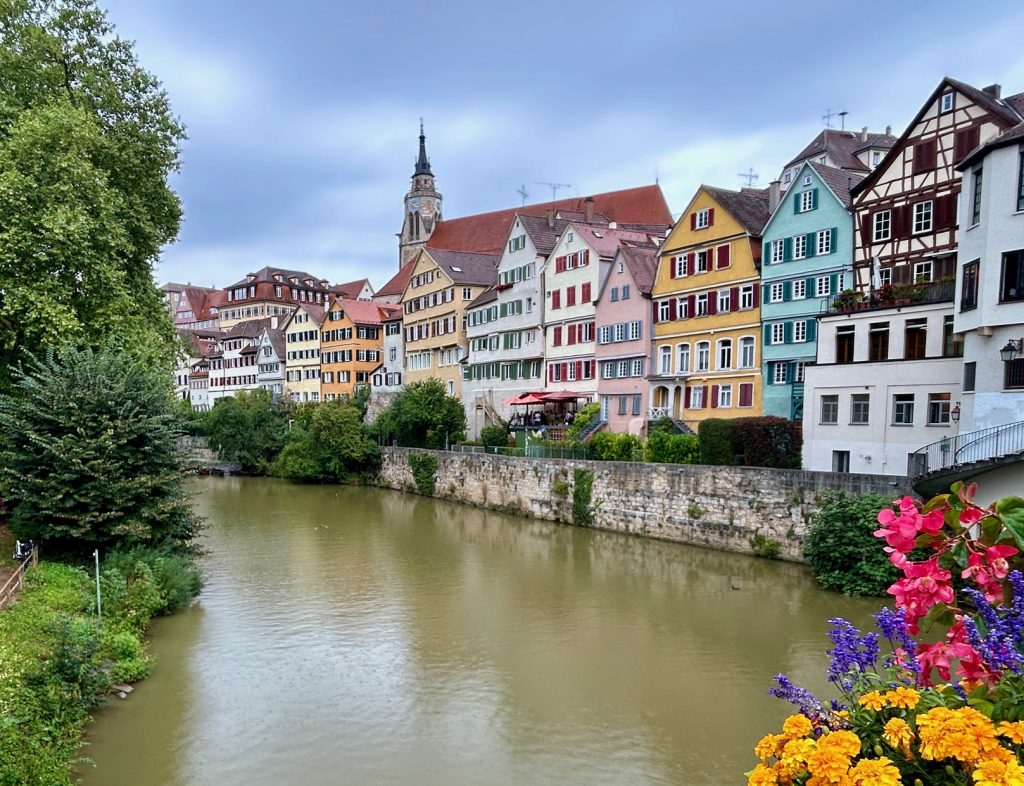
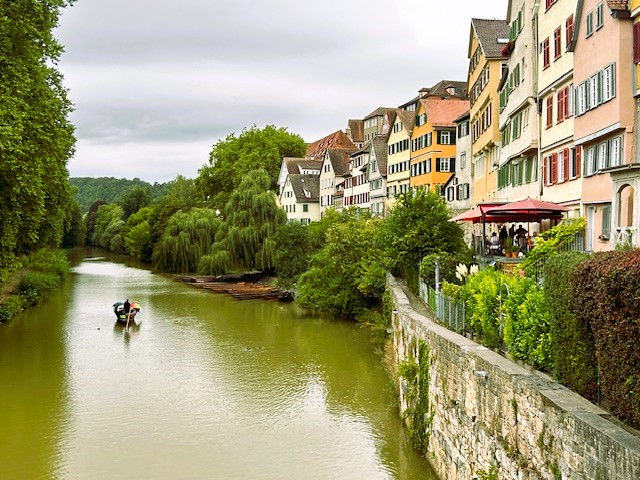
A staircase at the end of the island leads up on to the Eberhardsbrucke (which bridge is named in honour of Count Eberhard V who started the city’s university in 1477) and from there one can enter the old town via the Neckargasse or along a narrow path by the Zwingel Wall. I walked both routes during my short time in the city.
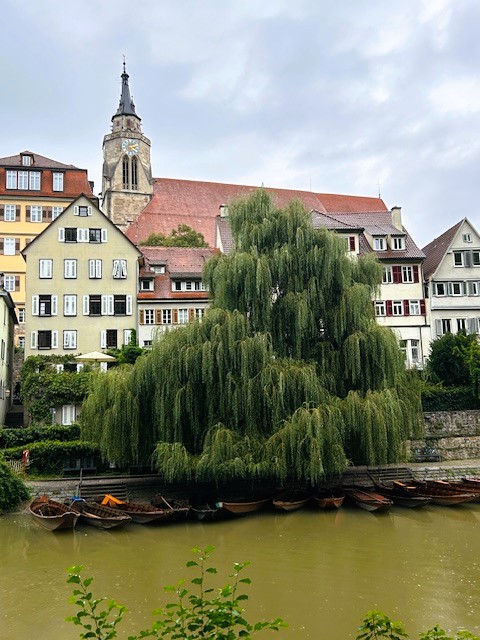
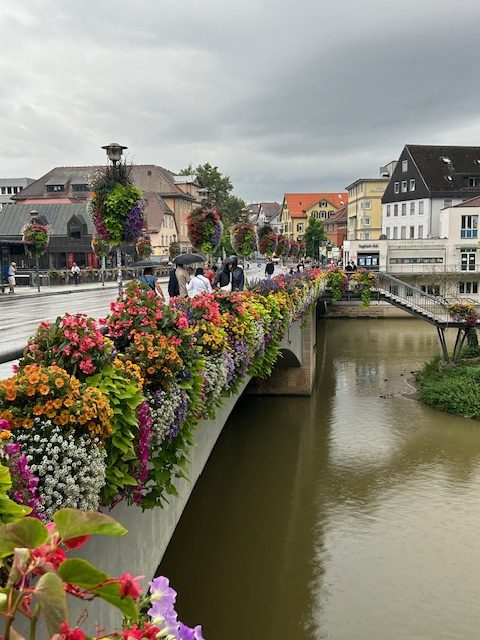
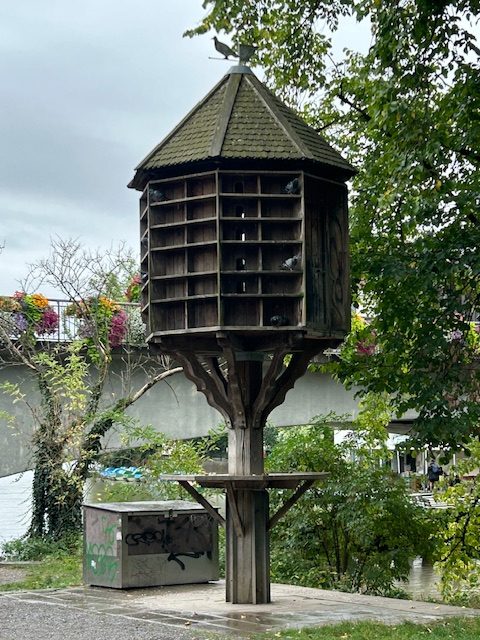
Before I forget, there’s a large birdhouse at the foot of the staircase which intrigued me. I learned that it serves to help control the city’s pigeon population which is as great a problem in Tubingen as in any other European city. When the pigeons nest in the birdhouse, city workers replace their eggs with plaster ones. This may not be one of the most successful methods of controlling pigeon numbers but it is perhaps one of the more humane.
Once up on the bridge I made my way to the 15th century Collegiate Church of Saint George (known more commonly as the Stiftskirche) which is on the Holzmarkt. This is another church which converted to Protestantism, the first Protestant service being held in the church during 1534. My primary reason for heading there was to take advantage of the supposedly good views from it’s belltower but, it wasn’t to be. The belltower was closed for the day but, no matter, the Stiftskirche is a beautiful and interesting church.
One detail I noticed about the church’s choir is that the carving of Moses shows him with horns on his head, much like a devil. I didn’t know this until today but it seems a great many images of Moses from the Middle Ages portray him with horns. It is not absolutely clear how this came about but it is suspected the horns were added to discredit him at a time when Christians and Jews were in conflict.

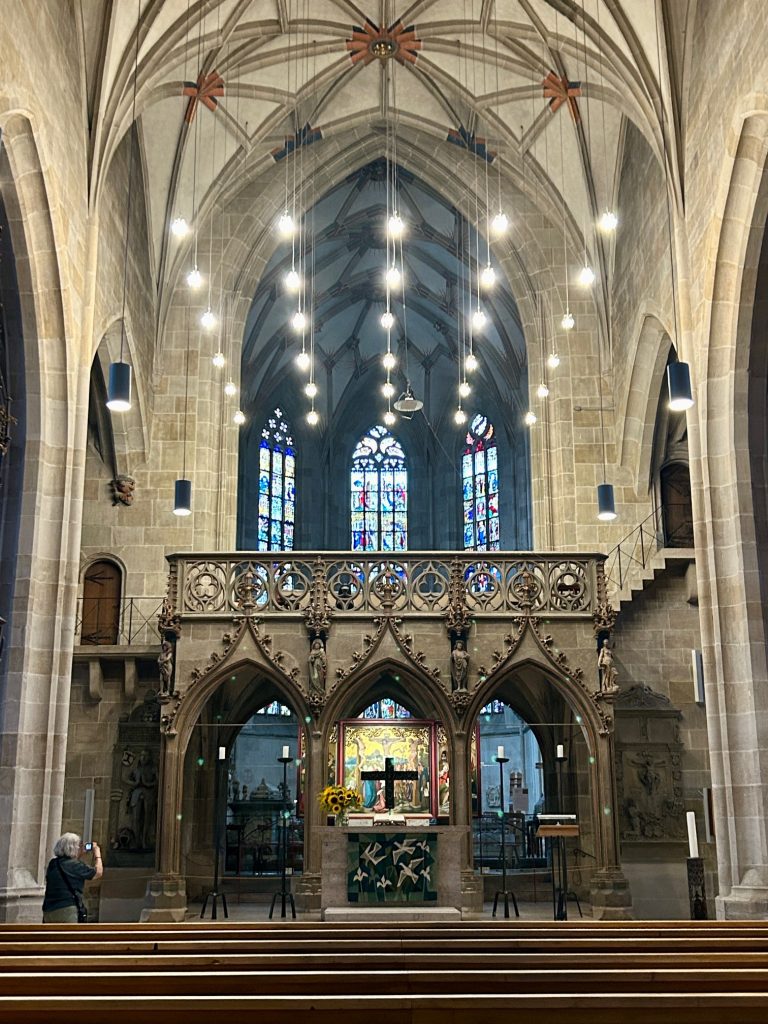
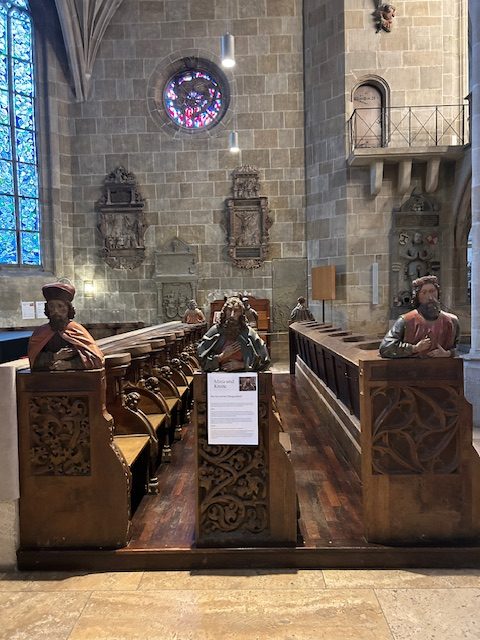
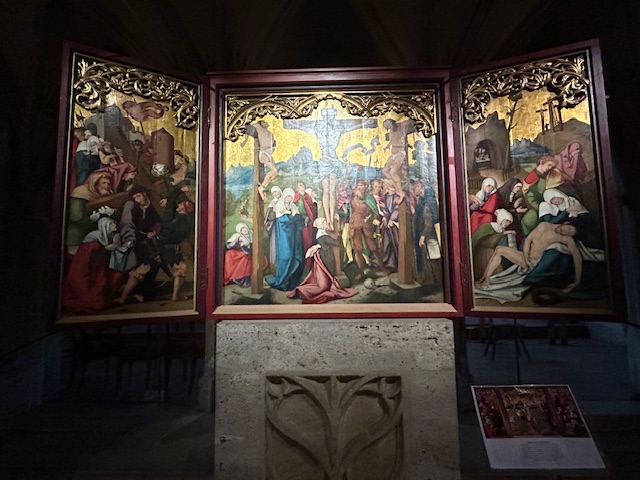
The Holzmarkt is adjacent to the Marktplatz and this market square has to be the focal point of the city with it’s more than impressive town hall (the Rathaus), Neptune’s Fountain (Neptunbrunnen) and the square’s many multifloored 15th and 16th century buildings. Tubingen escaped the heavy bombing which saw so many places devastated during World War II (only one bomb is recorded as having landed on the city) and it’s medieval centre is almost perfectly preserved.
The colourful Rathaus takes pride of place with it’s ornate astronomical clock and it’s tiny, flower covered balcony which comes into it’s own during civil wedding services when the newly married couple are encouraged to take their first kiss as husband and wife on the balcony in front of a cheering crowd.
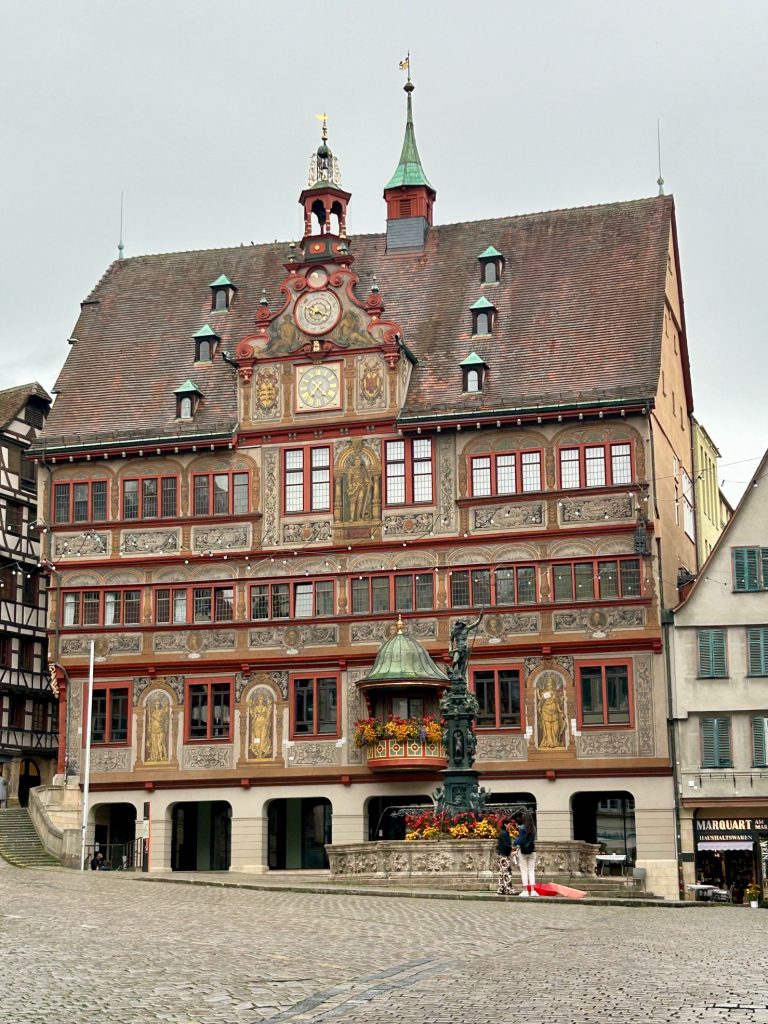
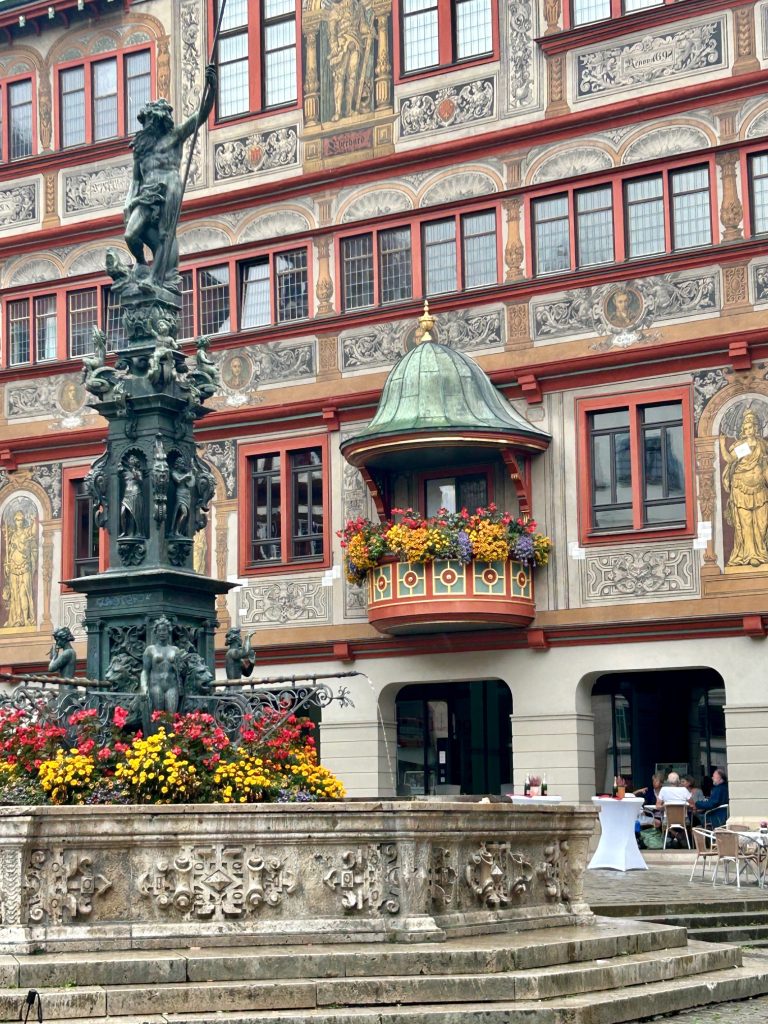
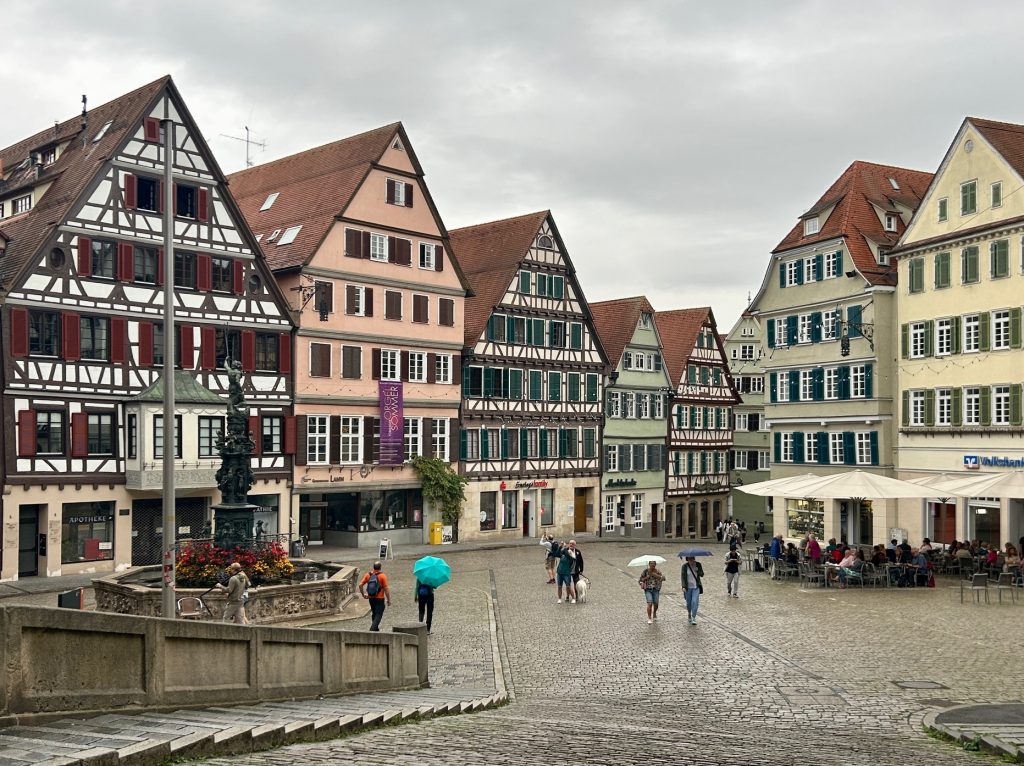
And then it began to rain, softly at first…
Despite the rain I continued with my walk around this colourful little city; admiring the abundance of flowers and some very good street art (there was a lot of not so nice grafitti too – just awful scribble) and; visiting a couple more churches too but then the heavens really opened.
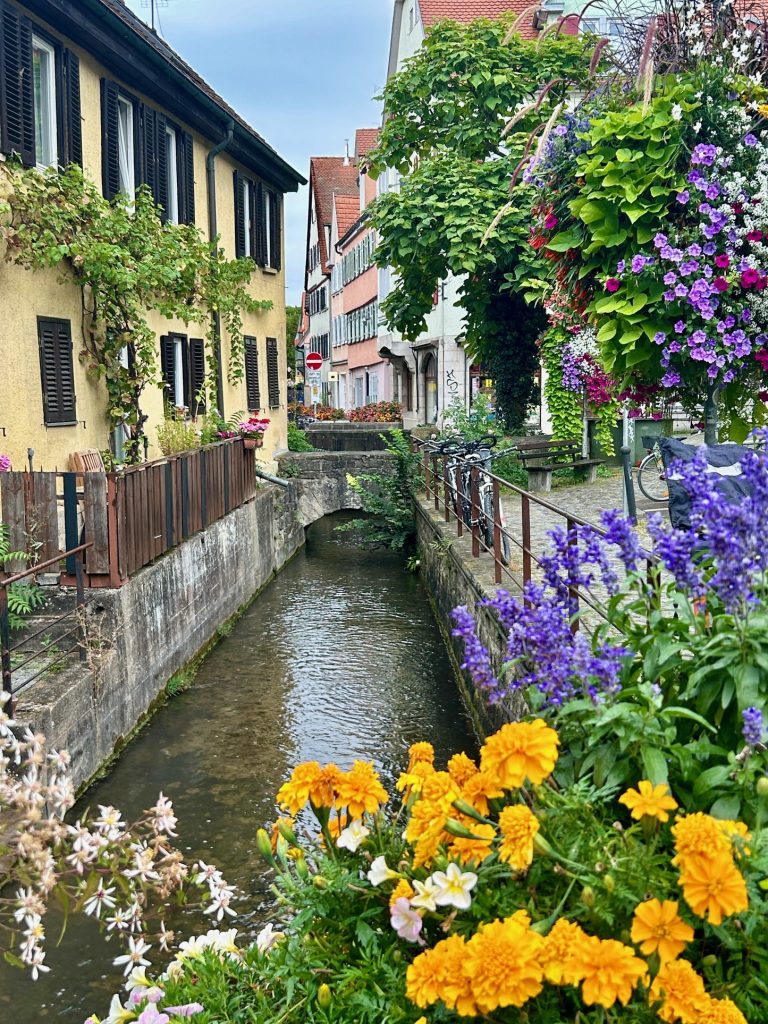
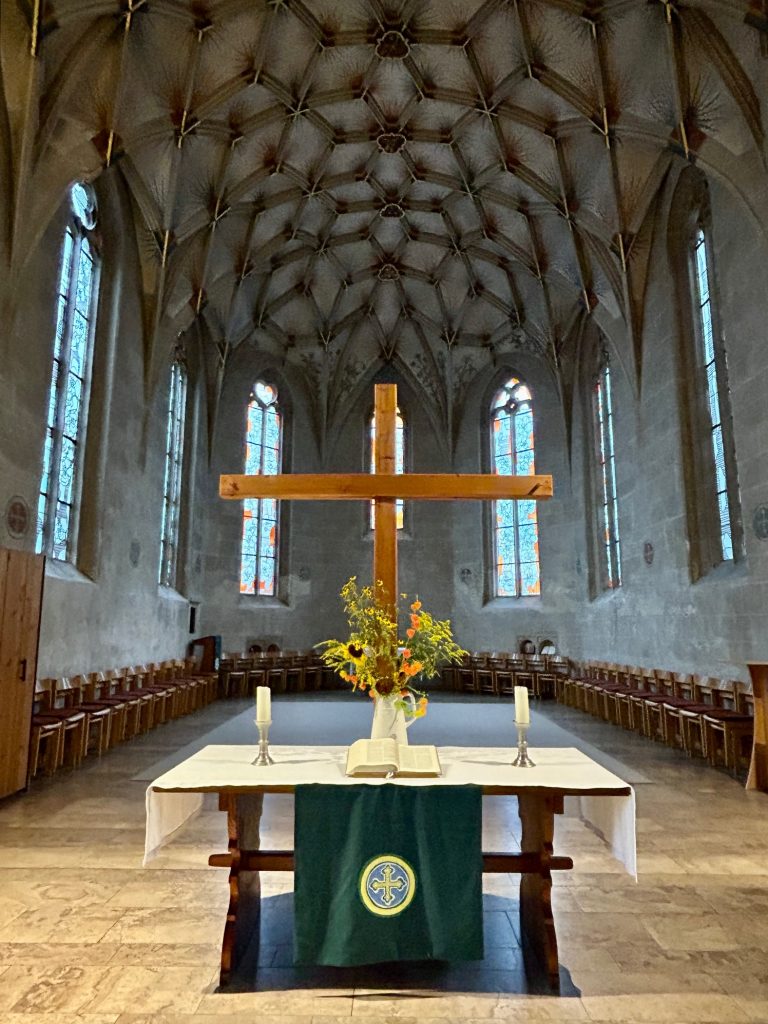
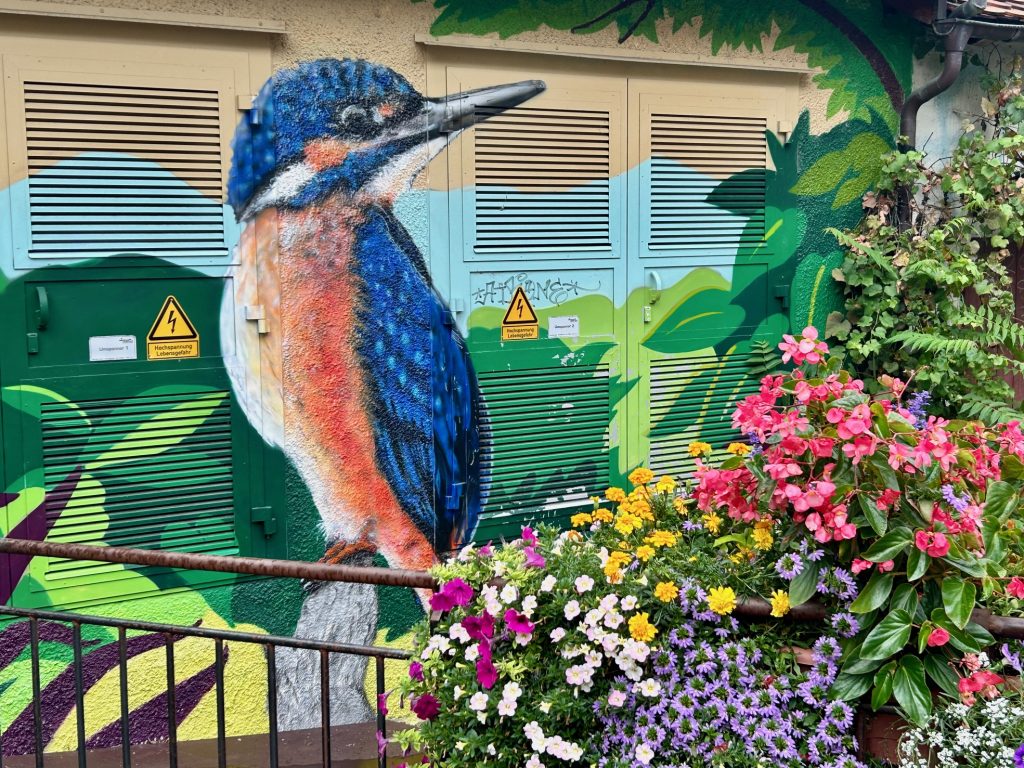
It was a cloudburst, a deluge, and I was well and truly caught in it. I was drenched. I found shelter for a while in a cafe (over coffee and apfelkuchen) but the rain wouldn’t let up and as time dragged on I felt obliged to try and make my way back to the Van. I started skipping (prancing is perhaps a more accurate description) from one door to another. It was slow progress… and then I noticed the Stolpersteine… more of Gunter Demnig’s work… small memorial plaques laid in the pavement in front of the former homes of victims of the Nazis… and my progress became slower still.
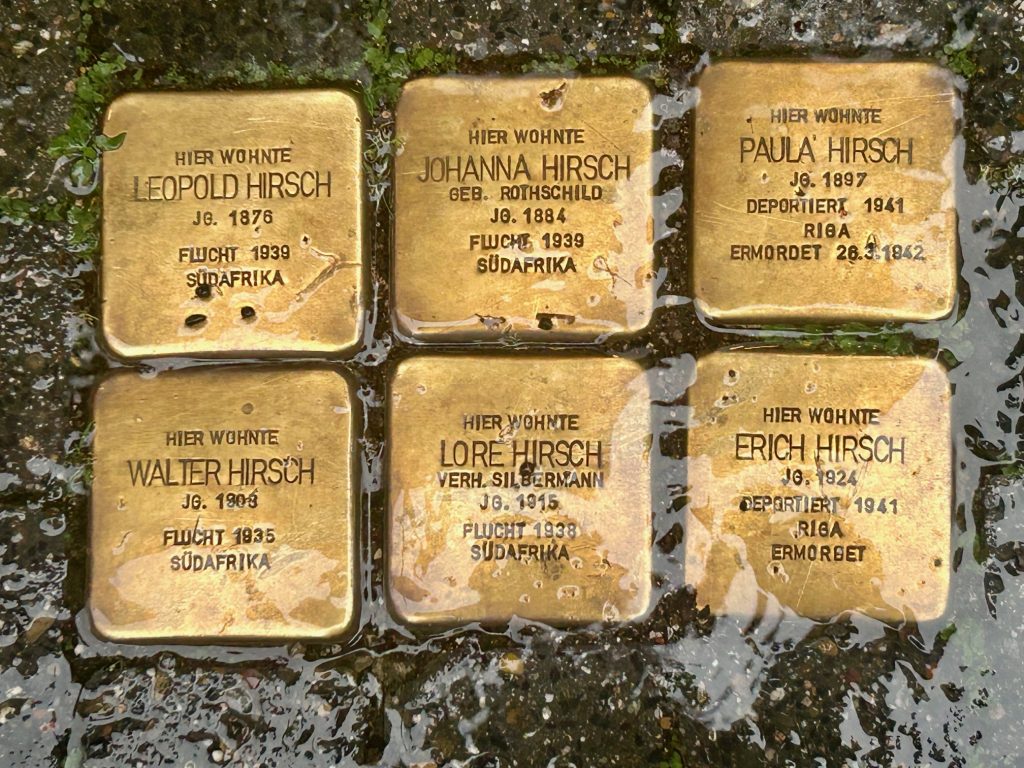
I made it back to the Van a while later. The bad weather stopped me searching out other stolpersteine and all the forecasts suggest it will continue to rain for the next few days.
It was time to move on. I missed out on the Hohentubingen Castle with it’s Renaissance style lower gate (the Unteres Schloss Tor), the Eberhard Karls University, the Wurmlinger Chapel and who knows what else but; I suspect I will return to Tubingen.

